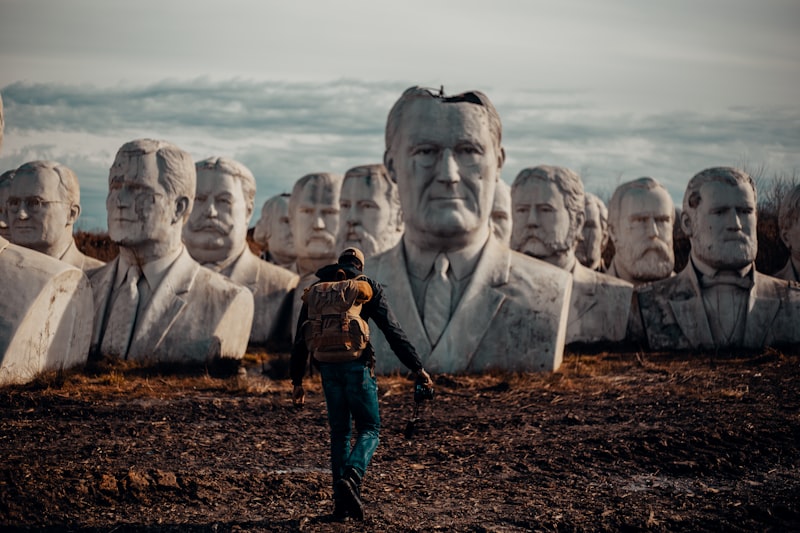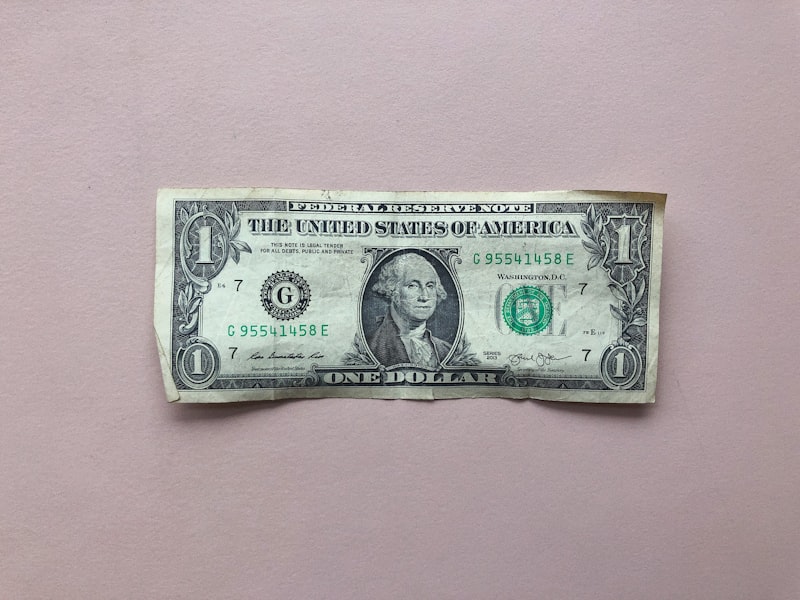One of the most daunting tasks for any U.S. President is managing foreign relations. It’s like being the captain of a ship navigating turbulent waters. Each decision has ripple effects, influencing not just bilateral relations but global stability.
Take President Franklin D. Roosevelt, for example. During World War II, he steered America through the Great Depression and into a pivotal role on the world stage. His fireside chats were more than just broadcasts; they were beacons of hope and resolve during uncertain times.
Fast forward to the Cold War era with President John F. Kennedy. The Cuban Missile Crisis tested his mettle, requiring a delicate balance of diplomacy and deterrence. His resolute actions averted a potential nuclear catastrophe and underscored the importance of swift decision-making under pressure.
Jumping ahead, President Ronald Reagan’s tenure marked a shift in Cold War dynamics. His bold stance against Soviet expansionism, coupled with economic reforms, contributed to the eventual collapse of the Soviet Union. It was a triumph of ideology and perseverance, demonstrating the power of steadfast leadership.
In more recent times, President Barack Obama faced a different set of challenges. From navigating the aftermath of wars in Iraq and Afghanistan to recalibrating America’s role in a rapidly changing global economy, his presidency emphasized multilateralism and diplomacy.
Today, under President Joe Biden, the United States continues to grapple with an evolving global landscape. From climate change to cybersecurity, the challenges are as diverse as they are complex. Yet, each administration builds upon the lessons of its predecessors, adapting strategies to meet contemporary challenges head-on.
From Truman to Biden: Evolution of U.S. Presidential Diplomacy

Diplomacy, the art of negotiation and international relations, has undergone significant evolution in the hands of successive U.S. Presidents from Harry S. Truman to Joe Biden. Each leader brought a unique approach to how America engages with the world, reflecting changing global dynamics and domestic priorities.
Truman, stepping into the role during the aftermath of World War II, set the stage for American diplomacy in the Cold War era. His doctrine of containment aimed to curb Soviet influence, marking the beginning of a robust U.S. presence on the global stage. Through initiatives like the Marshall Plan, Truman leveraged economic aid to rebuild war-torn Europe and counter communist expansion.

Following Truman, presidents like John F. Kennedy and Ronald Reagan introduced elements of personal diplomacy and strategic alliances. Kennedy’s handling of the Cuban Missile Crisis and Reagan’s negotiations with Mikhail Gorbachev highlighted a shift towards direct engagement and negotiation, steering diplomacy away from pure containment.
In more recent times, leaders such as Barack Obama and Donald Trump brought contrasting styles to diplomatic relations. Obama’s emphasis on multilateralism and diplomacy through organizations like the UN marked a departure from unilateral actions of the past. His efforts culminated in the Iran Nuclear Deal, illustrating a nuanced approach to complex international issues.
Conversely, Trump’s administration favored a transactional approach, prioritizing bilateral agreements and challenging established norms. His stance on trade tariffs and “America First” policies aimed to recalibrate global partnerships based on economic outcomes, rather than traditional diplomatic channels.
Under Joe Biden’s presidency, a return to multilateral diplomacy and reaffirmation of alliances has been evident. His administration has prioritized rejoining international agreements like the Paris Climate Accord and strengthening ties with traditional allies, signaling continuity with past administrations while addressing new global challenges.
Behind Closed Doors: Secrets of Presidential Foreign Policy Decisions
Have you ever wondered what goes on behind the scenes when presidents make critical foreign policy decisions? These decisions, often shaping the course of nations, are not just about diplomacy and international relations. They are about strategy, negotiation, and sometimes, the weight of history itself.
In the quiet corridors of power, away from the public eye, presidents deliberate over matters that can redefine global landscapes. It’s a realm where every word spoken carries immense consequence, and every action is scrutinized for its potential impact. Imagine being in that room, where leaders must balance national interests with global stability, often walking a tightrope between conflict and cooperation.
Presidential foreign policy decisions are not made in isolation. They are the culmination of intelligence briefings, expert opinions, and sometimes, personal convictions that shape a leader’s worldview. It’s about understanding the intricate dance of alliances and rivalries, navigating through geopolitical minefields while striving for peace and prosperity.
These decisions are also about legacy. Presidents know that their actions on the global stage will be scrutinized by history. They aim to leave a mark that defines their leadership, shaping how future generations perceive their tenure in office. It’s a delicate dance between pragmatism and idealism, where every move is calculated yet carries the weight of moral and ethical considerations.

Think of it as a high-stakes chess game, where each move determines the trajectory of international relations. Sometimes, it involves tough choices that challenge even the most seasoned statesmen. How do you balance economic interests with human rights? How do you respond to emerging crises while upholding diplomatic norms?
In essence, behind closed doors, presidential foreign policy decisions are about power and influence wielded on a global scale. They are about navigating through uncertainty and unpredictability, guided by principles that shape nations’ destinies. It’s a fascinating glimpse into the world of geopolitics, where decisions made today can resonate for years to come.
Turning Points in History: Crucial Foreign Policy Moments of U.S. Presidents
One of the most defining moments occurred during John F. Kennedy’s presidency with the Cuban Missile Crisis. In 1962, the world held its breath as the U.S. and Soviet Union stood on the brink of nuclear war over Soviet missiles stationed in Cuba. Kennedy’s firm yet strategic approach, balancing diplomacy with a readiness to act, averted catastrophe and underscored the importance of deft diplomacy in crisis management.
Fast forward to the Cold War era, Ronald Reagan’s presidency marked a shift with his unwavering stance against communism, famously urging Mikhail Gorbachev to “tear down this wall” in Berlin. Reagan’s rhetoric and policies contributed to the eventual collapse of the Soviet Union, reshaping global dynamics and paving the way for a new era of U.S. leadership.
Moving into the 21st century, George W. Bush faced a pivotal moment with the aftermath of the September 11 attacks. His administration launched the War on Terror, including the invasion of Afghanistan and Iraq, aiming to dismantle terrorist networks and promote stability in the Middle East. These decisions sparked debate and had far-reaching implications, influencing subsequent administrations’ approaches to national security and international relations.
Barack Obama’s presidency brought a significant pivot with the Iran Nuclear Deal in 2015. By negotiating a landmark agreement with Iran and other major powers, Obama sought to curb Iran’s nuclear capabilities in exchange for sanctions relief, aiming to promote stability in the Middle East and reduce the risk of nuclear proliferation.
More recently, Donald Trump’s presidency saw a departure from traditional foreign policy norms, marked by his “America First” agenda. His administration renegotiated trade deals, challenged international organizations, and pursued direct diplomacy with North Korea. These actions sparked debate over the role of the U.S. in global affairs and its commitment to longstanding alliances.
Navigating Global Waters: Challenges Faced by U.S. Leaders in Foreign Affairs
In the complex arena of global diplomacy, U.S. leaders encounter a myriad of challenges that demand astute navigation and diplomatic finesse. The landscape is fraught with geopolitical tensions, economic disparities, and cultural intricacies, each presenting unique hurdles to effective foreign policy.
One of the foremost challenges is striking a delicate balance between promoting national interests and fostering international cooperation. U.S. leaders often find themselves at the helm of negotiations where the stakes are high, aiming to advance strategic goals while maintaining alliances and diplomatic goodwill. This delicate dance requires a deep understanding of global dynamics and the ability to anticipate and mitigate potential conflicts.

Moreover, the rapid pace of technological advancements adds another layer of complexity. Issues such as cybersecurity threats and digital espionage necessitate constant adaptation and innovation in diplomatic strategies. Leaders must stay ahead in the realm of cybersecurity while simultaneously advocating for international norms and regulations that uphold global stability.

Economic considerations also loom large in foreign affairs. Trade disputes, sanctions, and economic policies impact global relationships significantly. U.S. leaders must navigate these economic waters adeptly, leveraging economic leverage while avoiding unintended consequences that could harm global partnerships.
Cultural diplomacy is another critical aspect. Understanding and respecting diverse cultural norms and values is essential for effective communication and collaboration on the world stage. Leaders must be culturally sensitive and adept at building bridges across different societies to foster mutual understanding and cooperation.
Crisis Management: How Presidents Have Handled International Challenges
Take a moment to think back. Remember when Kennedy faced the Cuban Missile Crisis? The world held its breath as tensions escalated between the U.S. and the Soviet Union. Kennedy’s steely resolve and strategic maneuvering helped avert a potential catastrophe, showcasing how decisive leadership can alter the course of history.
Fast forward to recent times. How about Obama tackling the Syrian chemical weapons issue? Amidst global outcry, Obama’s careful calibration of diplomatic pressures and military restraint sent a clear message: actions speak louder than words. It wasn’t just about making decisions; it was about making the right ones at the right time.
Now, let’s zoom into a different terrain. Trump’s approach to North Korea’s nuclear ambitions was nothing short of a rollercoaster ride. From fiery rhetoric to historic handshakes, Trump’s unconventional style broke norms and stirred debate. Love him or hate him, Trump’s unpredictability forced the world to pay attention, challenging traditional diplomatic norms.
But crisis management isn’t solely about big names and headlines. It’s about the intricate dance of strategy and sensitivity, the art of balancing power with diplomacy. Each president brings a unique style to the table, blending personal conviction with geopolitical chess.
As we reflect on these snapshots of history, one thing becomes clear: crisis management isn’t a one-size-fits-all playbook. It’s a dynamic interplay of personalities, policies, and global stakes. Whether facing down missiles or navigating peace talks, each president leaves an indelible mark on the world stage, shaping the narrative of international relations for years to come.
The Art of Negotiation: Diplomatic Triumphs and Setbacks in U.S. History
In the late 18th century, as delegates convened to draft the Constitution, negotiation was paramount. Each state held distinct interests and concerns, necessitating skillful compromise to achieve a unified vision for the fledgling nation. The result was a document that balanced state sovereignty with federal authority, a feat made possible by the diplomatic acumen of leaders like James Madison and Alexander Hamilton.
Throughout the 19th century, negotiations continued to shape the expanding nation. Treaties with Native American tribes sought to manage territorial expansion while respecting indigenous sovereignty. These negotiations were often complex, involving cultural misunderstandings and conflicting interpretations of land rights. The outcomes varied, with some agreements offering temporary peace while others led to enduring conflicts.
In the 20th century, the United States emerged as a global power, engaging in diplomacy on a worldwide scale. Negotiations following World War I led to the Treaty of Versailles, yet subsequent setbacks, such as the Senate’s refusal to ratify the treaty, highlighted the challenges of international diplomacy. The aftermath of World War II saw the United States at the forefront of negotiations to establish the United Nations, embodying a commitment to multilateral cooperation despite ideological differences with other nations.
The Cold War era tested American diplomacy with intense negotiations, such as the Cuban Missile Crisis, where negotiations between President Kennedy and Premier Khrushchev were pivotal in averting nuclear conflict. These high-stakes talks exemplified the delicate balance between assertiveness and diplomacy in international relations.
In more recent times, negotiations have addressed issues from trade agreements to climate accords, demonstrating the evolving nature of diplomatic challenges in a globalized world. Each negotiation carries echoes of past triumphs and setbacks, informing strategies for future engagements on the world stage.
Frequently Asked Questions
What are some historic examples of U.S. Presidents facing foreign policy challenges
Explore pivotal moments in U.S. history where Presidents navigated significant foreign policy challenges, shaping international relations and American diplomacy.
How do U.S. Presidents formulate foreign policy
Learn how U.S. Presidents formulate foreign policy, detailing key processes such as diplomatic negotiations, executive orders, and international treaties. Understand the role of advisors, intelligence agencies, and Congressional oversight in shaping decisions.
How do U.S. Presidents balance diplomacy and military action in foreign policy
This FAQ provides a concise overview of how U.S. Presidents navigate the delicate balance between diplomacy and military action in foreign policy. It explores the strategic decision-making processes and considerations involved in managing international relations effectively while addressing security challenges through military means when necessary.
What role does Congress play in shaping U.S. foreign policy decisions
This FAQ section provides a concise overview of Congress’s role in shaping U.S. foreign policy decisions. It explains how Congress influences foreign policy through legislative powers, funding approval, oversight of executive actions, and ratification of treaties. Readers will gain a clear understanding of Congress’s significant role in shaping the country’s international relations.
How have U.S. Presidents addressed global crises throughout history
Learn how U.S. Presidents have historically navigated global crises, examining strategies and historical examples.


